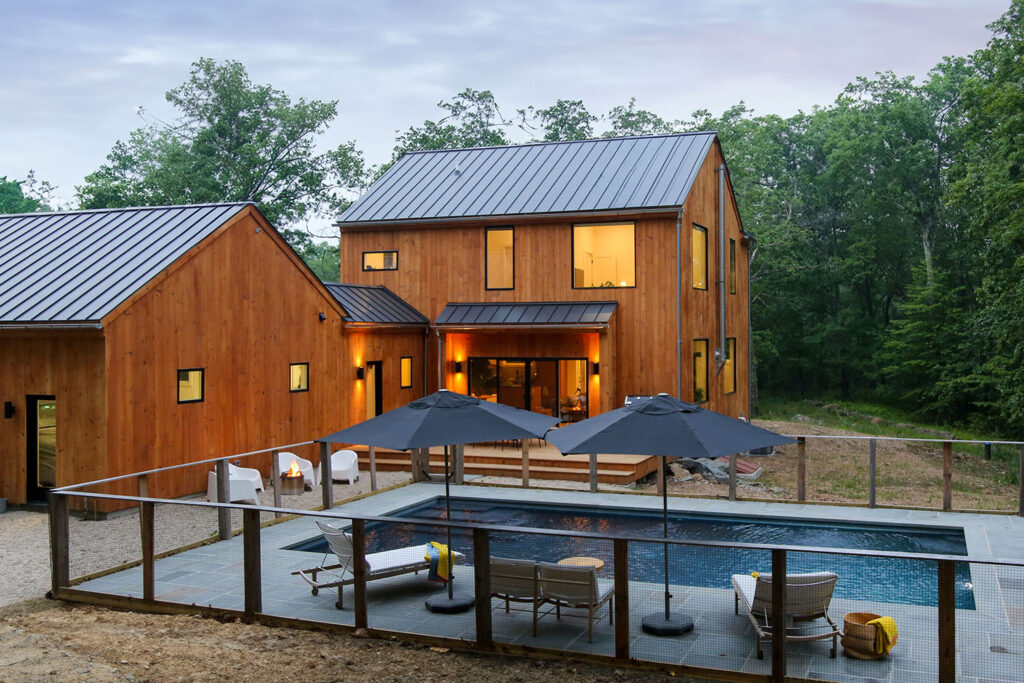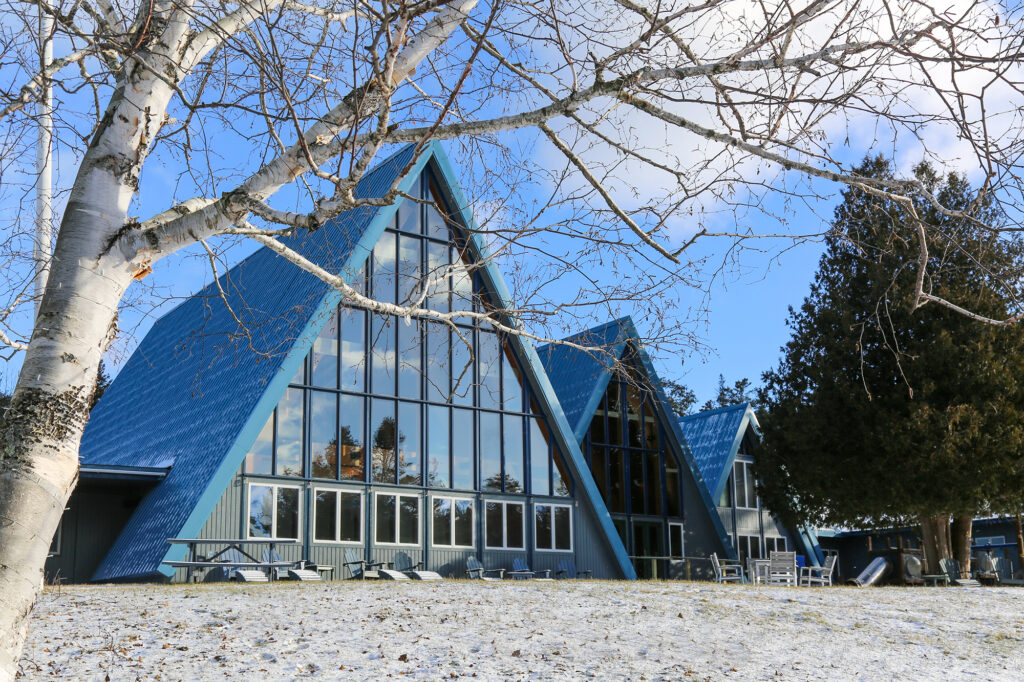One of the last things one looks forward to when planning to ride a motorcycle is snow. Yet, as my flight landed in Salt Lake City flurries were falling from the steely April sky, obscuring the mountains that ring Utah’s capital. I was in the state to spend a few days exploring courtesy of the Utah Office of Tourism and Kawasaki, which was launching their new Versys-X 300 motorcycle. And while temperatures the week before had been in the high 80s, the next few days were different. Here, at 4000 feet above sea level, the snow had turned to a solid squall. It was going to be cold.
Our route would bring us—a group of about a dozen riders and guides—south from dusty Green River across shifting desert topography, over impressive peaks and through a number of Utah’s state and national parks.

But first, the cold. Morning found me stuffing an improbable number of layers beneath my leather jacket and hoping the desert sun would take the bite out of our traveling speed. 34 degrees is pretty frio on a motorcycle. Our rides were the newest of Kawasaki’s adventure-styled Versys line. With a 296cc twin-cylinder engine, the Versys 300 offers a small displacement—far less than its 650 and 1100cc sisters—meaning it won’t overpower smaller or less experienced riders. Yet, it’s engineered to be a fully competent partner for some serious riding—on road and off. I was looking forward to putting it to the test. Lighting out of Green River the pack settled into place as we found our comfort zones. The bike responded surprisingly well to pushing, feeling steady and solid as I eased the engine above 8000 rpm and the speedometer approached a ton. Even for a tall rider—I’m 6’3” even with shit posture—the bike felt remarkably comfortable. And the windscreen significantly eased the morning chill.

Our first stop was Goblin Valley State Park, so named for its thousands of “hoodoo” rocks jumbled together across the desert. After wandering among the rock formations and recharging with lunch we were given the chance to escape even farther from the real world courtesy of some off roading along a dirt track that wound through the valley allowing views of the San Rafael Swell. Our bellies were full, the bikes were nimble, the vistas stunning and the sun had finally warmed the desert to a near-balmy 60 degrees.

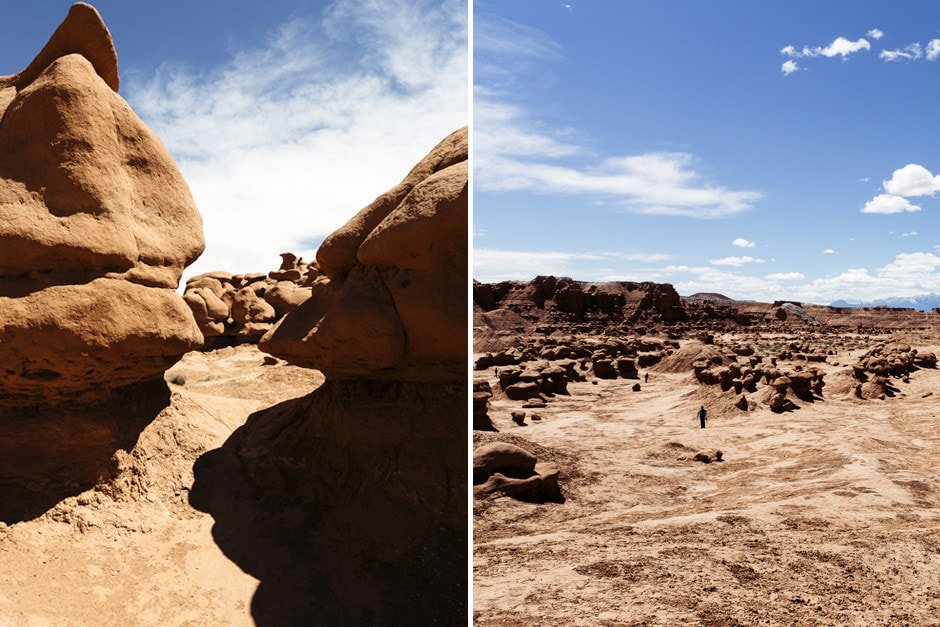
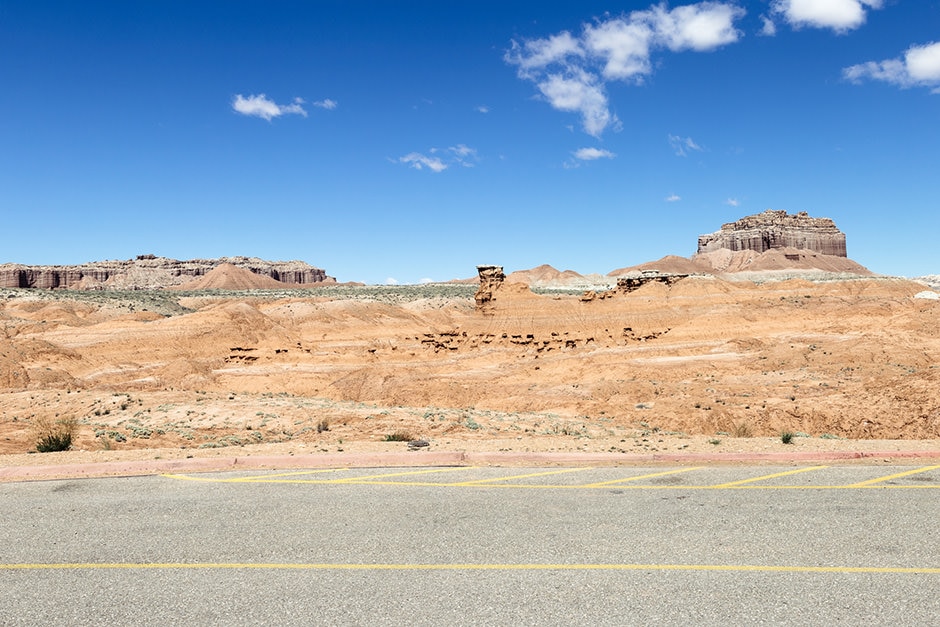

That night we crashed out in luxury at Cougar Ridge Lodge in Torrey, a ranch-cum-resort located on the lip of Capitol Reef National Park. The casitas where we stayed were appointed with impressive levels of comfort—stone and wood inlays, ample space for lounging and huge, pounding showers to wash off the accumulated red dust.
The next morning, after watching the sun creep across the ranch’s pastures, and fueling up on coffee at the Broken Spur up the road, we returned to the tarmac. Much of the day’s ride would be along Scenic Byway 12, a 124-mile stretch of perfect blacktop that threads through some of the state’s most legendary landscape.

From Torrey, the road heads south, up through a range of near-9000 foot peaks. Larb Hollow Overlook provides a great photo op, where the rises drop away revealing the span of valley shadowed by the distant Henry Mountains.
In Boulder, following a winding, dramatic descent, we visited the Anasazi State Park Museum, and toured the remains of an Ancestral Puebloan village built around A.D. 1050. The village was important as it existed on the border of Ancestral Puebloan and Freemont cultures and may have been a key center for trade. The buildings and pit huts were inhabited until approximately A.D. 1200, when they were abandoned—potentially after burning.
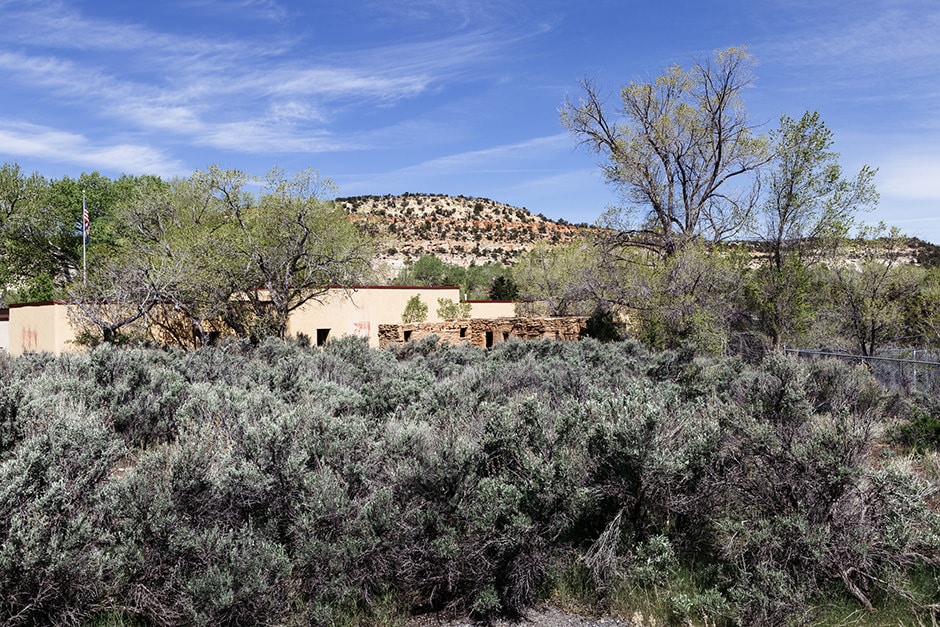
Leaving Boulder, we traversed potentially the route’s most extraordinary set of pavement, known as The Hogback. Built in 1940, this nearly 12-mile stretch of road winds guardrail-free atop the spine of a mesa with multi-hundred foot drops on either side. Terrifying? Maybe. But it made me giddy as I eased my engine around S curves while admiring the view.
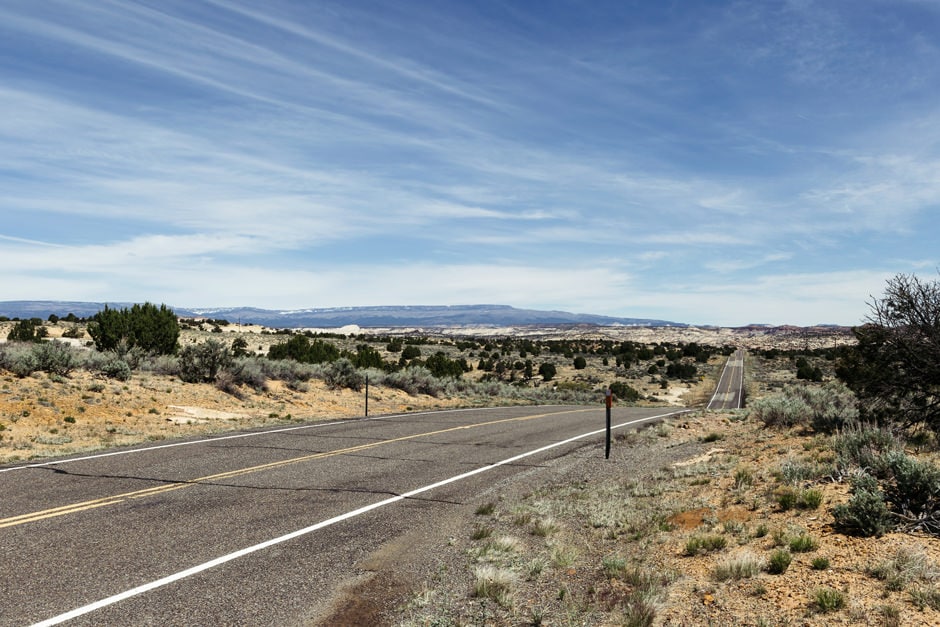
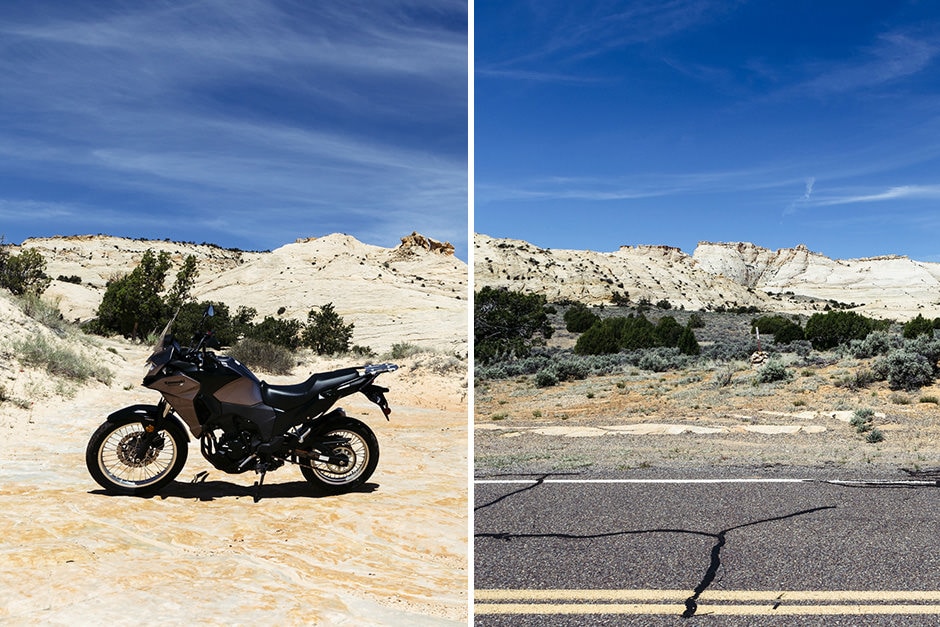

Ready for lunch, we cruised into Escalante, which despite a population of less than 900, felt like a metropolis compared to what we’d passed through. Escalante Outfitters, a do-it-all outdoor gear shop/campground/restaurant served up delicious pizzas and huge salads loaded with local veggies—paired with a gigantic cafe Americano they sat well with this vegetarian in meat country.
The final afternoon of our ride found us pushing through the Dixie National Forest, past Duck Creek Village, which seemed like a vision from some alternate reality Wild West, and scooting by the awesomely-named Blowhard Mountain. By this point my bike and I felt intrinsically linked as we carved corners and revved through canyon passes. My only disappointment came from knowing I was only a couple of hours from having to hand the keys back.

After a long, swooping drop through red hills we arrived in Cedar City. Dismounting in the parking lot of our hotel, most of the riders stood around chatting and resisting the urge to part with our rides as the Kawasaki staff began work on packing them away.
While much of the crew departed from Cedar City, the handful of us with flights leaving from Salt Lake City had a bit more adventuring on the docket.
A boat trip across the Great Salt Lake, courtesy of the Utah State Parks department, allowed for epic views of the surrounding mountains—and some proper exfoliation courtesy of the near-constant blast of wind-carried salt crystals.


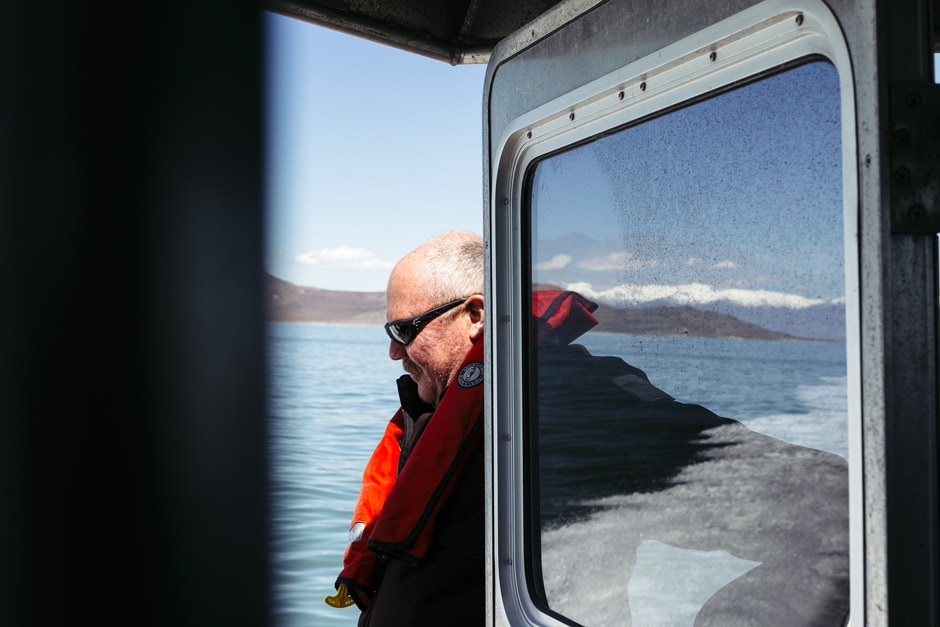

Our last morning was dedicated to one more bucket list-worthy motorcycle-related stop. The Bonneville Salt Flats is one of the most iconic spots in motorsports history. Since the early 20th Century, manufacturers, racers and general lunatics have maxed out their vehicle’s speeds along the expanse of packed salt crust. We endured a brutally early wake up in order to arrive there just after sunrise. This time of year, the flats are covered in a smooth, shallow wash of water which reflected the rising sun and mirrored the nearby mountains in stunning symmetry. Seeing Bonneville had always been a dream of mine and while it was unfortunate we weren’t able to speed over the flats, it was difficult to imagine a more beautiful scene.
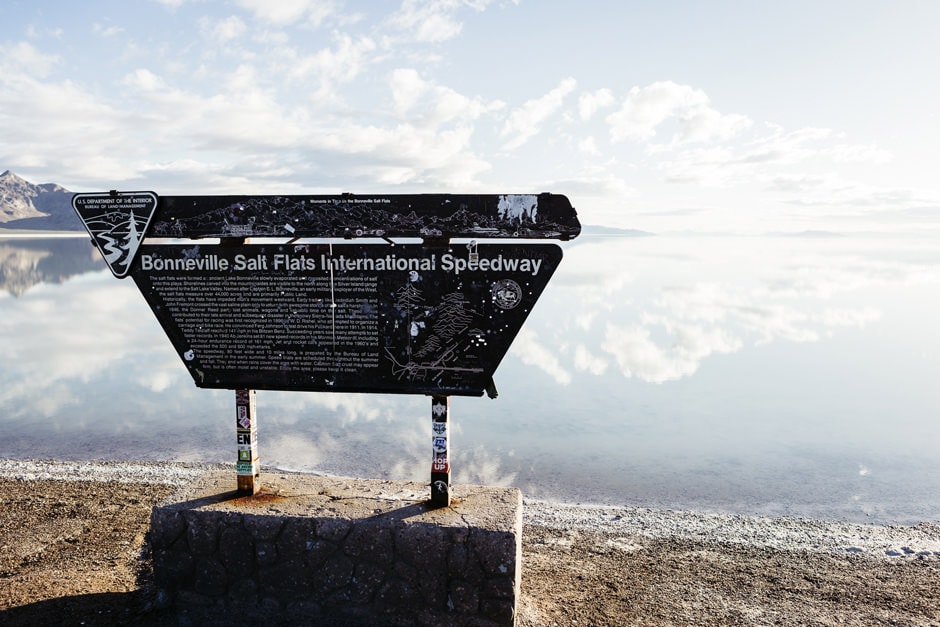

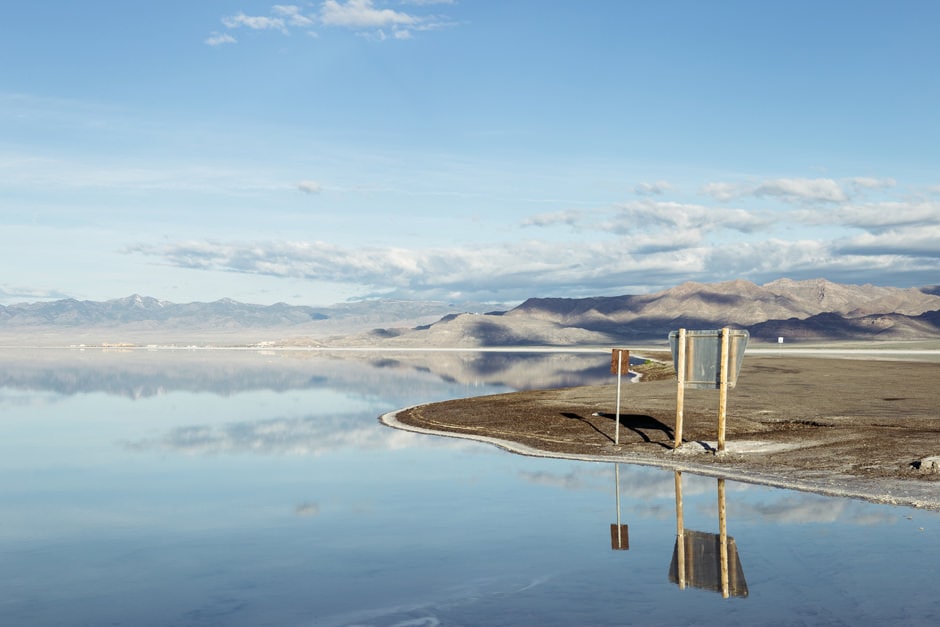
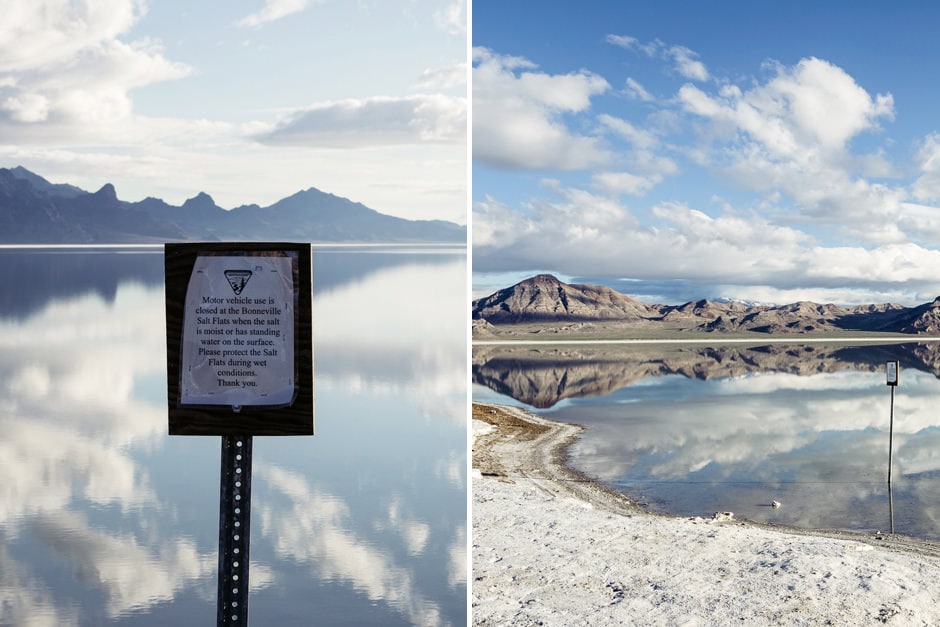
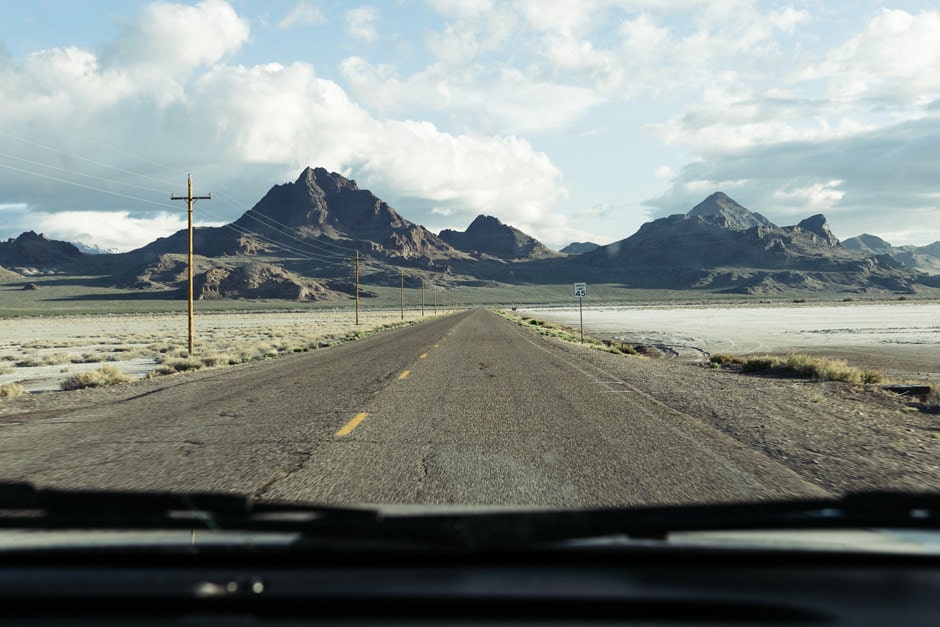

The following drive to the airport allowed for ample time to drowsily reflect on a trip I won’t soon forget. Utah offered scenery so beautiful it almost became a joke—I’d find myself thinking “it can’t get any better than this,” only to be amazed anew as I rounded another bend. And the Versys-X 300 provided a near-perfect accompaniment—a little bike with a huge heart perfectly primed for adventuring.


